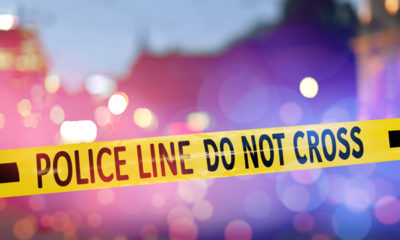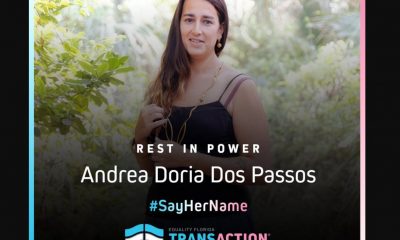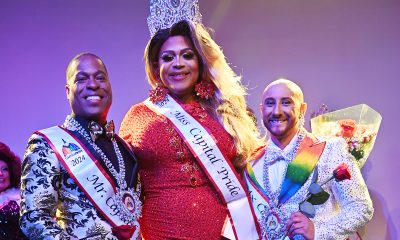Local
Report critical of D.C. police response to hate crimes
Gay liaison unit’s ability to fight hate crimes ‘weakened’ by changes
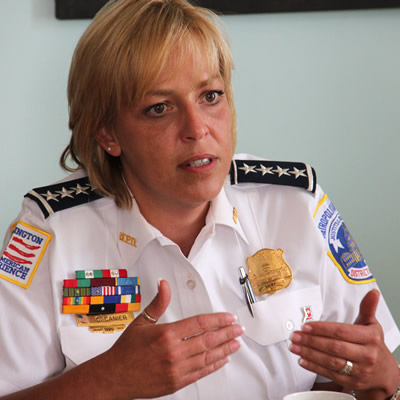
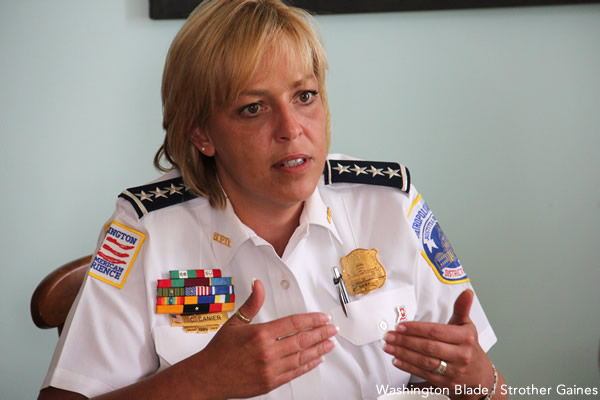
D.C. Police Chief Cathy Lanier (Washington Blade photo by Strother Gaines)
The restructuring of the D.C. Metropolitan Police Department’s Gay and Lesbian Liaison Unit in 2009 “weakened its effectiveness in responding to hate crimes” and hindered its ability to reach out to the LGBT community, according to a newly released report.
The 41-page Hate Crimes Assessment Report was prepared by an independent task force created in 2012 by the Anti-Defamation League of Washington, a nationally recognized civil rights group, at the request of D.C. Police Chief Cathy Lanier.
In announcing the launching of the task force, Lanier said she asked the ADL to assist the MPD by conducting an impartial review of its programs directed toward the LGBT community, comparing them with other police departments and identifying areas that could be improved.
“MPD policies on the identification and handling of bias or hate crimes are strong and reflect many best practices of law enforcement agencies nationally,” the report concludes.
It also concludes that the “vast majority” of MPD leaders and rank and file officers have a deep commitment to “ensuring the safety and security of the LGBT community and to all of those who live, work, or visit the District of Columbia.”
But the report says a series of structural changes that the department put in place for the GLLU beginning in 2009, which were aimed at expanding the reach of the unit throughout the city, appear to have weakened its effectiveness and diminished its credibility within the LGBT community.
“MPD’s outreach to the LGBT community, which is a critical component of preventing and responding to hate crimes, is significantly less visible and effective than it was prior to the restructuring,” the report says.
“The restructuring of the GLLU reduced the size and limited the role of the central core of the GLLU, weakened its effectiveness in responding to hate crimes and engaging in outreach, and made it less accessible and visible to the LGBT community,” says the report.
“The GLLU’s reduced visibility and presence in the LGBT community has significantly impacted the level of trust the LGBT community has in MPD,” it says.
Former Police Chief Charles Ramsey created the GLLU along with separate liaison units working with the Latino, Asian, and deaf and hard of hearing communities in the late 1990s. Unlike police liaison units in other cities, whose responsibilities were limited mostly to public relations and educational duties, Ramsey arranged for the GLLU and the other units to investigate crimes and make arrests.
Under the leadership of its former commander, Sgt. Brett Parson, the GLLU developed strong ties to the LGBT community, assigning its officers to attend LGBT events and meetings and to patrol neighborhoods with high concentrations of LGBT residents. Although the officers were based in the GLLU headquarters in Dupont Circle, they responded to calls throughout the city and played an active role in investigating crimes targeting LGBT people, including hate crimes.
Harvard University’s Kennedy School of Government recognized the GLLU as a highly effective agent for community policing and awarded the unit a grant to expand its work and assist police departments in other cities set up similar units.
In 2009, two years after then Mayor Adrian Fenty appointed her, Lanier put in place a restructuring plan that, among other things, decentralized the GLLU and the other liaison units through the creation of an affiliate officers program that placed affiliate liaison unit members in each of the seven police districts. The restructuring included downsizing the central GLLU office.
LGBT activists, who said they had no objections to the creation of the affiliate program, expressed strong opposition to what they said was an initial plan by Lanier to close the GLLU’s headquarters office. Activists said at the time that the affiliate officers, who were to receive limited training on LGBT related issues, would not have the experience and depth of understanding of the LGBT community that the core GLLU officers, most of whom were gay or lesbian, had.
Lanier quickly backed down from her initial plan to disband the headquarters unit after opposition surfaced from members of the City Council. However, according to activists, she appeared to be gradually decreasing the core unit’s size.
A short time after the restructuring began, Parson requested and was given a transfer out of the unit to patrol duties. Citing budget constraints, the department replaced Parson with a sergeant who was assigned to supervise both the GLLU and the Latino Liaison Unit.
LGBT representatives said the lack of a full-time supervisor for the GLLU was a further indication that the chief was diminishing the ability of the GLLU to carry out its mission.
Other changes associated with the restructuring included restrictions on the types of events or meetings GLLU officers could attend and what appeared to critics as an increase in the frequency that GLLU officers were detailed to other assignments unrelated to the LGBT community.
Lanier has said that due to police personnel limitations, officers from various specialized units would be temporarily detailed to other, street patrol duties as needed.
In a series of recommendations, the Hate Crimes Assessment Report calls on the department to appoint a full-time supervisor of the GLLU and to ensure that the GLLU’s core unit is sufficiently staffed with officers.
In an 8-page response to the task force report, Lanier said she and the department’s leadership agree with most of the conclusions and recommendations of the report.
“Admittedly, some of this is difficult for me to read as it clearly details where the Department has fallen short in our goal to foster strong relationships with our great and diverse communities that enable us to jointly combat the scourge of crimes motivated by hate or bias,” Lanier said in a statement accompanying the report.
“Nonetheless, I strongly support the recommendations of the Task Force, and the Department will be working to implement them,” she said.
Among other things, Lanier said the department agrees with the report’s finding that neither the GLLU nor its affiliate officers “have the visibility in the community that is our goal, and we must improve that.”
She added, however, that it became clear from the report and meetings MPD officials had with the task force that some members of the LGBT community have “expectations” that the MPD cannot meet.
“While we value a strong relationship with the LGBT community, we are also responsible for being sound stewards of public resources,” she said in her response. “Members of the GLLU had attended events in the past that we have determined are inappropriate for police officers on-duty, including bar crawls, book clubs, and certain events in Leather Week,” according to Lanier.
“That said, we believe there are plenty of opportunities for MPD – GLLU as well as its affiliates – to strengthen outreach with the community,” she said.
In her response to the report, Lanier said Sgt. Matthew Mahl, who had been detailed to serve as the GLLU’s supervisor for over a year, “has been assigned to oversee GLLU exclusively since November 2013.” She added that Mahl “is a good fit for the GLLU and its next stage of development.”
In another finding, the report says there is a belief in the LGBT community that “homophobia and transphobia are widespread within MPD, with several describing it as rampant.”
Interviews with members of the community revealed that the hostility toward transgender people, especially transgender women of color, is common among many MPD officers, the report says.
“Virtually every transgender person who spoke to us at the four community meetings reported that they had been harassed or mistreated because of their gender identity or expression, ranging from acts of ignorance and insensitivity to outright hostility and overt expressions of bigotry and harassment,” the report says.
In citing hate crimes data released by the MPD, the report notes that hate crimes targeting the LGBT community make up the highest percentage of hate crimes compared to other categories of victims, such as race, ethnicity, religion, or disability. In 2012, the most recently year for which full data is available, there were 46 reported hate crimes based on sexual orientation, comprising 57 percent of a total of 81 hate crimes for all categories.
Police data show there were 9 hate crimes reported in 2012 based on gender identity or expression.
The report doesn’t say how many cases of anti-LGBT hate crimes resulted in an arrest by police or how many of the cases remain unsolved.
“It remains unclear whether the reported increase [in anti-LGBT hate crimes] reflects an actual higher level of hate violence directed against the LGBT community, better reporting by LGBT victims, or the lack of reporting by victims in other categories,” the report says.
The task force members who wrote the report are: David Friedman, Sophie Dornstreich, Michael Liberman – Anti-Defamation League; Sara Warbelow – Human Rights Campaign; Lisa Bornstein – Leadership Conference on Civil and Human Rights; Mara Keisling and Vincent Paolo Villano – National Center for Transgender Equality; Jack McDevitt, Associate Dean and Director of the Institute of Race and Justice, Northeastern University in Boston; and Jim Nolan, Associate Professor of Sociology and Criminology, West Virginia University in Morgantown.
“We welcome the recommendations in the ADL report,” said Hassan Naveed, co-chair of Gays and Lesbians Opposing Violence (GLOV). “GLOV and other LGBT organizations plan to issue a community response to the recommendations in the next two weeks.”
The full report along with Lanier’s response can be seen here: http://mpdc.dc.gov/
District of Columbia
Weekend brings two shootings in U Street, Dupont Circle areas
Man dies after incident at Desperados
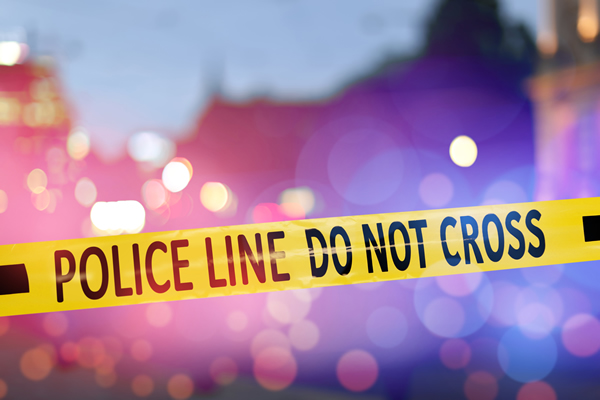
A man was shot to death shortly after 1 a.m. on Saturday, April 27, inside the Desperados Burgers & Bar at 1342 U St., N.W., which is located on the same block a short distance away from the LGBTQ nightclub Bunker D.C. and around the corner less than a block away from the recently opened LGBTQ bar Crush on 14th Street, N.W.
The incident prompted Bunker to post on its Facebook page a message saying its security team quickly ushered patrons standing outside to enter the club and as a precautionary measure prevented patrons from leaving until it was deemed safe to do so.
A D.C. police statement identifies the shooting victim as Kenneth Goins, 43, of Salisbury, Md. The statement says officers on patrol in the 1300 block of U Street, N.W. heard gunshots at about 1:12 a.m. and immediately arrived at Desperados to investigate the incident.
“Officers located a man inside with multiple gunshot wounds,” the statement says. “Despite all life saving efforts, the victim was pronounced dead on the scene,” it says. Neither the statement nor a police incident report pertaining to the shooting provides a description of the person who committed the shooting nor discloses whether any of the customers inside the restaurant and bar witnessed the shooting.
The statement says the police Homicide Branch is investigating the shooting and urges anyone with knowledge of the incident to call police at 202-272-9099. Like all homicide cases, it says the D.C. Metropolitan Police Department offers a reward of up to $25,000 to anyone who provides information that leads to the arrest and conviction of the person or persons responsible for a homicide committed in the District.
“There was a shooting incident on U ST. N.W., just 4 doors down from BUNKER,” the Bunker Facebook post says. “Our security team promptly responded, ensuring the safety of everyone by ushering them inside for cover,” it says. “Currently, the courageous police officers are outside, handling the situation and working diligently to maintain a secure environment for our guests,” the message continues.
“As a responsible establishment, we strongly prioritize your safety, and as a precautionary measure, we will not permit anyone to exit the building until we deem it safe to do so,” the posting says. “Rest assured, we, as the owners, take this matter very seriously, and your safety remains our highest priority.”
The U Street shooting at Desperados Burgers & Bar took place a little over two hours after six people were shot and wounded outside the Decades nightclub at 1219 Connecticut Ave., N.W. near Dupont Circle and near several gay bars on P Street and 17th Street in the Dupont Circle area. Police said none of those who were shot suffered life-threatening injuries
A separate police statement says with the help of several witnesses, police identified and arrested Rennwel Mantock, 29, of Hyattsville, Md., in connection with the shooting on charges of Assault with Intent to Kill, Possession of Unregistered Ammunition, and Possession of an Unregistered Firearm. The statement says a gun belonging to Mantock was recovered on the scene. Court records show a judge has ordered him to be held without bond until a May 7 preliminary hearing.
“The detectives’ investigation determined Mantock opened fire after employees removed him from a nightclub following a dispute,” according to the statement.
A police arrest affidavit filed in D.C. Superior Court says Mantock told police at the time he was apprehended on the scene that he was dancing with a woman at the club when a security guard ordered him to leave and then “grabbed him by the neck and punched him in the face right before dragging him down the steps.” The Decades club states on its website that it has several floors with multiple bars.
According to the arrest affidavit, Mantock told police that one of the security officials punched him in the face again and threw him to the ground after dragging him out the door. It says Mantock “stated that he then pulled out his gun and started shooting” because “he was very upset about the security punching him in the face,” adding that he “began firing at the Decades’ security.”
The affidavit says five of the six people shot were Decades employees.
Gay former Dupont Circle Advisory Neighborhood Commissioner Mike Silverstein, who lives near where the shooting took place, said Decades is not known as a place that LGBTQ people patronize but said the surrounding neighborhood is home to many LGBTQ residents and draws many LGBTQ visitors.
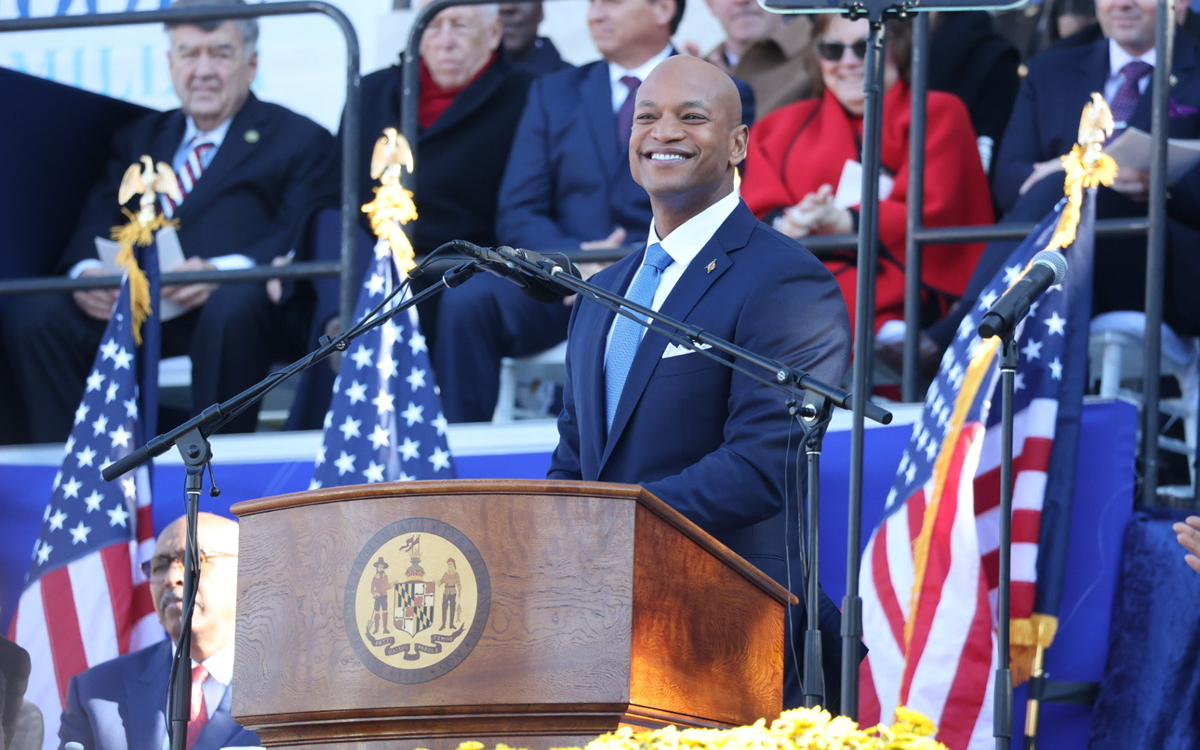
Maryland Gov. Wes Moore on Thursday signed a bill that seeks to combat efforts to ban books from state libraries.
House Bill 785, also known as the Freedom to Read Act, would establish a state policy “that local school systems operate their school library media programs consistent with certain standards; requiring each local school system to develop a policy and procedures to review objections to materials in a school library media program; prohibiting a county board of education from dismissing, demoting, suspending, disciplining, reassigning, transferring, or otherwise retaliating against certain school library media program personnel for performing their job duties consistent with certain standards.”
Moore on Thursday also signed House Bill 1386, which GLSEN notes will “develop guidelines for an anti-bias training program for school employees.”
District of Columbia
Catching up with the asexuals and aromantics of D.C.
Exploring identity and finding community
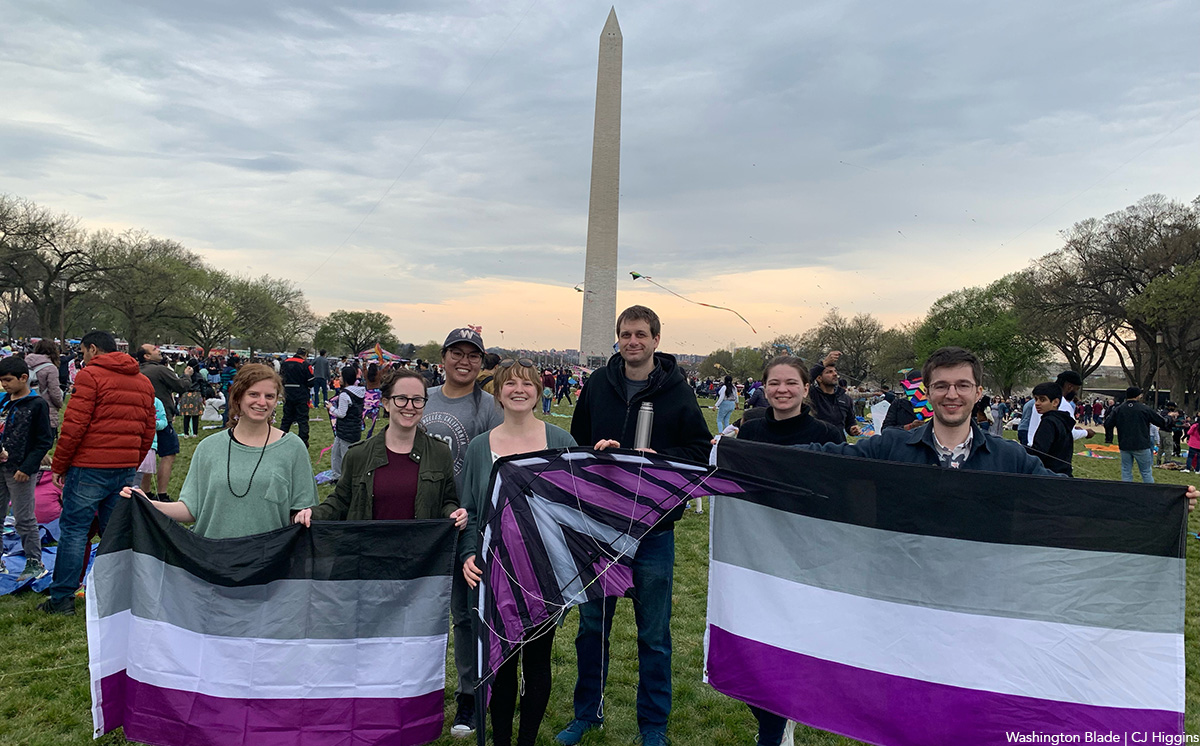
There was enough commotion in the sky at the Blossom Kite Festival that bees might have been pollinating the Washington Monument. I despaired of quickly finding the Asexuals and Aromantics of the Mid-Atlantic—I couldn’t make out a single asexual flag among the kites up above. I thought to myself that if it had been the Homosexuals of the Mid-Atlantic I would’ve had my gaydar to rely on. Was there even such a thing as ace-dar?
As it turned out, the asexual kite the group had meant to fly was a little too pesky to pilot. “Have you ever used a stunt kite?” Bonnie, the event organizer asked me. “I bought one. It looked really cool. But I can’t make it work.” She sighed. “I can’t get the thing six feet off the ground.” The group hardly seemed to care. There was caramel popcorn and cookies, board games and head massages, a game of charades with more than its fair share of Pokémon. The kites up above might as well have been a coincidental sideshow. Nearly two dozen folks filtered in and out of the picnic throughout the course of the day.
But I counted myself lucky that Bonnie picked me out of the crowd. If there’s such a thing as ace-dar, it eludes asexuals too. The online forum for all matters asexual, AVEN, or the Asexual Visibility and Education Network, is filled with laments: “I don’t think it’s possible.” “Dude, I wish I had an ace-dar.” “If it exists, I don’t have it.” “I think this is just like a broken clock is right twice a day type thing.” What seems to be a more common experience is meeting someone you just click with—only to find out later that they’re asexual. A few of the folks I met described how close childhood friends of theirs likewise came out in adulthood, a phenomenon that will be familiar to many queer people. But it is all the more astounding for asexuals to find each other this way, given that asexual people constitute 1.7% of sexual minorities in America, and so merely .1% of the population at large.
To help other asexuals identify you out in the world, some folks wear a black ring on their middle finger, much as an earring on the right ear used to signify homosexuality in a less welcoming era. The only problem? The swinger community—with its definite non-asexuality—has also adopted the signal. “It’s still a thing,” said Emily Karp. “So some people wear their ace rings just to the ace meet-ups.” Karp has been the primary coordinator for the Asexuals and Aromantics of the Mid-Atlantic (AAMA) since 2021, and a member of the meet-up for a decade. She clicked with the group immediately. After showing up for a Fourth of July potluck in the mid-afternoon, she ended up staying past midnight. “We played Cards against Humanity, which was a very, very fun thing to do. It’s funny in a way that’s different than if we were playing with people that weren’t ace. Some of the cards are implying, like, the person would be motivated by sex in a way that’s absurd, because we know they aren’t.”
Where so many social organizations withered during the pandemic, the AAMA flourished. Today, it boasts almost 2,000 members on meetup.com. Karp hypothesized that all the social isolation gave people copious time to reflect on themselves, and that the ease of meeting up online made it convenient as a way for people to explore their sexual identity and find community. Online events continue to make up about a third of the group’s meet-ups. The format allows people to participate who live farther out from D.C. And it allows people to participate at their preferred level of comfort: while many people participate much as they would at an in-person event, some prefer to watch anonymously, video feed off. Others prefer to participate in the chat box, though not in spoken conversation.
A recent online event was organized for a discussion of Rhaina Cohen’s book, “The Other Significant Others,” published in February. Cohen’s book discusses friendship as an alternative model for “significant others,” apart from the romantic model that is presupposed to be both the center and goal of people’s lives. The AAMA group received the book with enthusiasm. “It literally re-wired my brain,” as one person put it. People discussed the importance of friendship to their lives, and their difficulties in a world that de-prioritized friendship. “I can break up with a friend over text, and we don’t owe each other a conversation,” one said. But there was some disagreement when it came to the book’s discussion of romantic relationships. “It relegates ace relationships to the ‘friend’ or ‘platonic’ category, to the normie-reader,” one person wrote in the chat. “Our whole ace point is that we can have equivalent life relationships to allo people, simply without sex.” (“Allo” is shorthand for allosexual or alloromantic, people who do experience sexual or romantic attraction.)
The folks of the AAMA do not share a consensus on the importance of romantic relationships to their lives. Some asexuals identify as aromantic, some don’t. And some aromantics don’t identify as asexual, either. The “Aromantic” in the title of the group is a relatively recent addition. In 2017, the group underwent a number of big changes. The group was marching for the first time in D.C. Pride, participating in the LGBTQ Creating Change conference, and developing a separate advocacy and activism arm. Moreover, the group had become large enough that discussions were opened up into forming separate chapters for D.C., Central Virginia, and Baltimore. During those discussions, the group leadership realized that aromantic people who also identified as allosexual didn’t really have a space to call their own. “We were thinking it would be good to probably change the name of the Meetup group,” Emily said. “But we were not 100% sure. Because [there were] like 1,000 people in the group, and they’re all aces, and it’s like, ‘Do you really want to add a non-ace person?’” The group leadership decided to err on the side of inclusion. “You know, being less gatekeep-y was better. It gave them a place to go — because there was nowhere else to go.”
The DC LGBT Center now sponsors a support group for both asexuals and aromantics, but it was formed just a short while ago, in 2022. The founder of the group originally sought out the center’s bisexual support group, since they didn’t have any resources for ace folks. “The organizer said, you know what, why don’t we just start an ace/aro group? Like, why don’t we just do it?” He laughed. “I was impressed with the turnout, the first call. It’s almost like we tapped into, like, a dam. You poke a hole in the dam, and the water just rushes out.” The group has a great deal of overlap with the AAMA, but it is often a person’s first point of contact with the asexual and aromantic community in D.C., especially since the group focuses on exploring what it means to be asexual. Someone new shows up at almost every meeting. “And I’m so grateful that I did,” one member said. “I kind of showed up and just trauma dumped, and everyone was really supportive.”
Since the ace and aro community is so small, even within the broader queer community, ace and aro folks often go unrecognized. To the chagrin of many, the White House will write up fact sheets about the LGBTQI+ community, which is odd, given that when the “I” is added to the acronym, the “A” is usually added too. OKCupid has 22 genders and 12 orientations on its dating website, but “aromantic” is not one of them — presumably because aromantic people don’t want anything out of dating. And since asexuality and aromanticism are defined by the absence of things, it can seem to others like ace and aro people are ‘missing something.’ One member of the LGBT center support group had an interesting response. “The space is filled by… whatever else!” they said. “We’re not doing a relationship ‘without that thing.’ We’re doing a full scale relationship — as it makes sense to us.”
CJ Higgins is a postdoctoral fellow with the Alexander Grass Humanities Institute at Johns Hopkins University.
-

 District of Columbia4 days ago
District of Columbia4 days agoCatching up with the asexuals and aromantics of D.C.
-

 South America4 days ago
South America4 days agoArgentina government dismisses transgender public sector employees
-
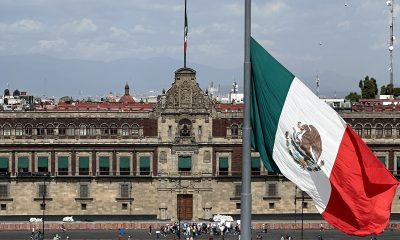
 Mexico3 days ago
Mexico3 days agoMexican Senate approves bill to ban conversion therapy
-

 Advice3 days ago
Advice3 days agoShould I divorce my husband for the hot new guy in our building?

